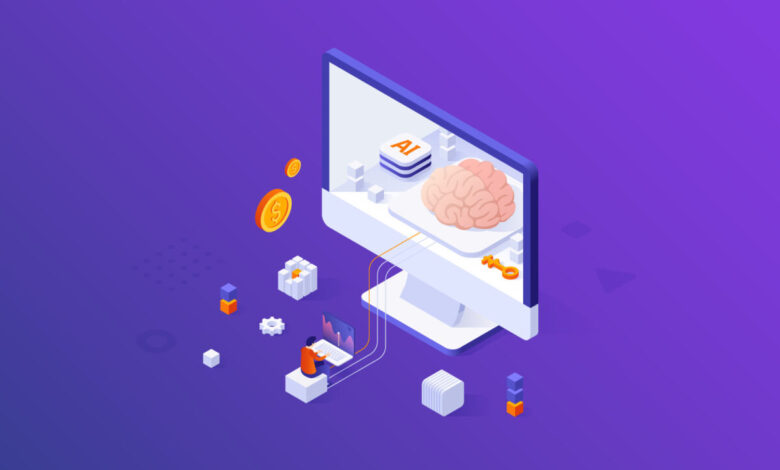
Accuracy, accountability, and trust aren’t optional in financial planning. When millions—or even billions—are on the line, leaders need more than fast answers. They need answers they can stand behind with clarity and confidence.
CFOs can’t afford blind spots or black-box decisions. That’s why a new class of decision-support AI—what we call agentic capabilities—is gaining momentum. In fact, more than one in four leaders say their organizations are already exploring agentic AI to a large or very large extent.
Agentic AI refers to assistive, decision-support capabilities embedded into finance tools, not fully autonomous agents. These systems surface insights, simulate outcomes, and flag risks early, helping leaders explore what-if scenarios and act proactively. The key difference: they keep humans in control.
It’s a middle ground: more proactive and intelligent than static rules-based systems, but far more explainable and controllable than black-box automation or chatbot copilots. That’s why many CFOs are betting on agentic AI capabilities—not to replace their teams, but to help them move faster and make better decisions.
Assistive AI, Not Autonomous Agents
The most impactful AI in finance today doesn’t replace decision-makers, it supports them as an intelligent collaborator.
Today’s best systems catch unexpected deviations before they escalate, before they become major issues. Simulation engines let finance teams pressure-test plans on demand, instantly modeling the impact of macro shifts like interest rate changes or new tariffs. And when numbers move unexpectedly, these tools don’t just show that they changed, they explain why they changed, surfacing the underlying drivers and recommending next steps.
In more advanced setups, AI agents even collaborate across domains. A finance analyst agent might pull updated projections from an economist agent to refresh planning assumptions mid-cycle. When a surprise hits the P&L, an intelligent assistant can pinpoint the root cause—whether it’s an unexpected cost spike, a shift in customer behavior, or a timing issue—and recommend adjustments to help finance leaders avoid similar shocks.
These aren’t abstract ideas. They’re real capabilities gaining traction in boardrooms. Adoption of agentic AI among finance leaders is expected to grow more than sixfold over the next year, reflecting a sharp rise in demand for decision-support tools that enhance human judgment.
Why Trust and Explainability Still Rule
For all its power, AI in finance must be deployed with one critical principle in mind: trust.
CFOs are the stewards of accountability. They can’t afford “black box” answers or recommendations without clear rationale. You wouldn’t let a sleepless intern without context make million-dollar decisions. But that’s what AI can become if it operates without oversight.
That’s why explainability, auditability, and human review are foundational in the most effective AI deployments. When the AI suggests a plan change or flags a risk, finance leaders must be able to trace the logic—understand what changed, why it matters, and whether it aligns with broader strategy.
In this model, the CFO still owns the call. But AI gives them better options, faster. It’s the kind of assistant every finance team needs: one that’s tireless, detail-obsessed, and context-aware, surfacing insights and second-order effects, without bypassing the humans accountable for the outcome.
How AI is Quietly Transforming Finance
The most effective AI deployments in finance aren’t bolted on as separate copilots. They’re embedded directly into the planning workflows CFOs already use, surfacing insights exactly when and where they’re needed.
Some of the most common use cases include:
- Real-time scenario modeling for “what if” moments: new tariffs, cost spikes, or policy shifts
- Variance detection in monthly close, automatically flagging outliers and unexpected trends
- Automated plan revisions triggered when key assumptions—like FX rates or demand forecasts—change mid-cycle
- Intelligent allocation suggestions, helping finance teams shift resources dynamically as conditions evolve
- Risk exposure identification, highlighting dependencies like supply chain constraints or currency volatility that could impact future reporting
- Three-way reconciliation automation, where AI continuously triangulates between the P&L, balance sheet, and cash flow
One of the most immediately useful applications is in variance analysis. When forecasts drift, AI can detect the deviation and surface the underlying driver—whether it’s a currency fluctuation, a pricing delay, or a change in input costs that didn’t flow through in time. What once took hours of backtracking can now be understood in moments, with clear documentation for every assumption.
Scenario modeling is also becoming more dynamic. Instead of rebuilding entire models when external factors shift—new tariffs, labor disruptions, changing interest rates—teams can now run simulations on demand. These aren’t just quick what-ifs. They reflect the full ripple effect across revenue, margins, and cash flow, helping leaders adapt before risk turns into impact.
AI is also changing how the three core statements are reconciled. Rather than waiting until month- or quarter-end to spot inconsistencies, finance teams can rely on continuous cross-checks that flag mismatches between the P&L, balance sheet, and cash flow as they emerge. That means faster course corrections and fewer surprises when it’s time to report out.
These capabilities are already reshaping workflows—quietly, reliably, and with the finance team still firmly at the helm. The decisions still belong to the people. But now, they’re equipped with the foresight to act faster and smarter.
One key enabler of this shift is generative AI. But its value in finance isn’t in novelty, it’s in how seamlessly it’s embedded into trusted systems and planning workflows and triggered at the right moment.
Where GenAI Fits in the Assistive Model
When generative models are embedded directly into planning systems, they help finance teams move faster without adding friction. A summary of a forecast variance. An instant explanation of a changing market assumption. A refreshed scenario based on the latest interest rate projection. These are the kinds of insights GenAI can deliver—if they show up in context, not in isolation.
What doesn’t work: GenAI tools that live off to the side. The moment a planner or analyst has to stop what they’re doing to ask a generic chatbot a question, the thread is lost. Usefulness drops. The only place GenAI belongs in finance is inside the tools finance teams already trust—serving up insight, not distraction.
The Road Ahead: AI That Supports the People in Charge
In today’s high-stakes financial environment, speed matters—but clarity matters more. Agentic AI delivers practical wins: freeing up time, improving visibility, and reducing risk—while keeping accountability where it belongs.
This is the real shift: not handing over decisions, but making them better, with AI as a trusted partner.



